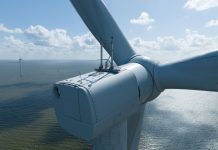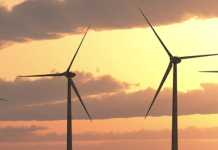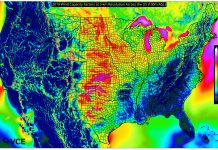U.S. offshore wind development received a major boost from the Trump administration. The U.S. Department of the Interior’s Bureau of Ocean Energy Management (BOEM) recently announced the sale of two new offshore wind lease areas off Massachusetts, a call for input on additional proposed lease areas in the New York Bight, and a high-level assessment of all Atlantic Coast waters for potential future offshore wind lease locations.

“Secretary Zinke’s leadership is transforming the enormous potential for offshore wind into a concrete pillar of American energy dominance,” said Tom Kiernan, CEO of the American Wind Energy Association (AWEA). “Expanding the market for offshore wind is good news for American workers and the coastal communities needed to manufacture, deploy, and operate these projects. Working closely with the states, this administration can lead the U.S. to become a world leader for offshore wind as it is for other sources of energy.”
Because most offshore wind development will happen in federal waters, BOEM’s process to assess, identify, and auction lease areas to offshore energy developers is essential to unlock U.S. offshore wind’s technical potential, which is estimated to be nearly double current U.S. electricity use. BOEM has previously awarded 13 commercial wind-energy leases off the Atlantic coast and this announcement puts two more areas up for sale off the coast of Massachusetts. BOEM’s call for input in New York and the high-level assessment of the Atlantic Coast has the potential to open even more lease areas to offshore wind.
BOEM’s announcements add to the market optimism for U.S. offshore wind development. Major offshore infrastructure developers have placed aggressive bids to develop existing wind lease areas, and America’s first offshore wind farm came online in late 2016. States such as Maryland, Massachusetts, New Jersey, and New York are advancing ambitious policies that will help the offshore wind industry achieve scale and build out a domestic manufacturing supply chain.
A recent study coauthored by New York, Massachusetts, Rhode Island, and the Clean Energy States Alliance, found that 8 GW of offshore wind from Maryland to Maine will create almost 40,000 full-time U.S. jobs by 2028; 86 GW by 2050 would support 160,000 jobs. Another study by the Workforce Development Institute found that 74 different occupations, including electricians, ironworkers, and welders, are needed during the various stages of planning, development, and operations of offshore wind farms. The land-based wind industry supports more than 100,000 U.S. workers today, demonstrating growth at this scale is achievable.
Source: AWEA
For more information, go to www.awea.org



























